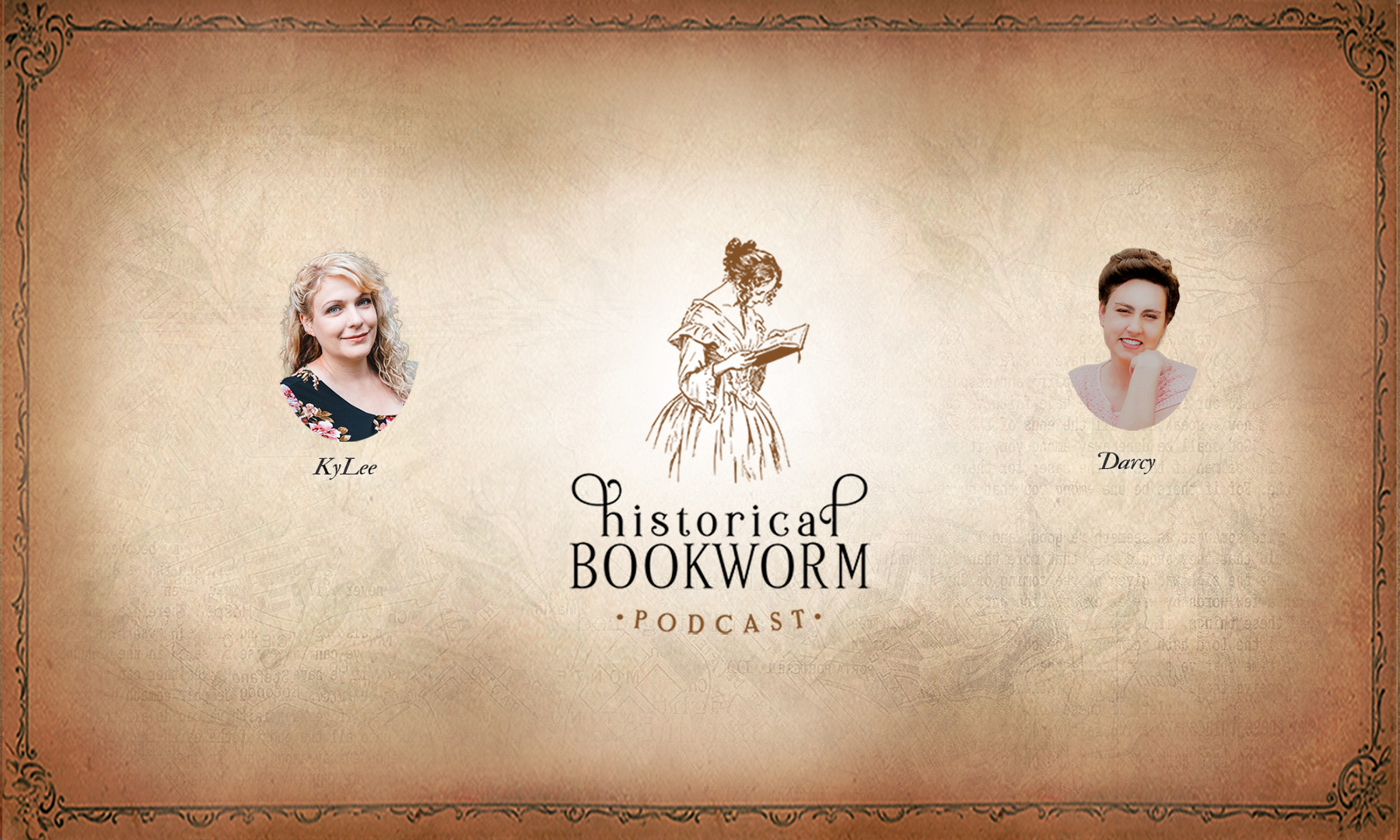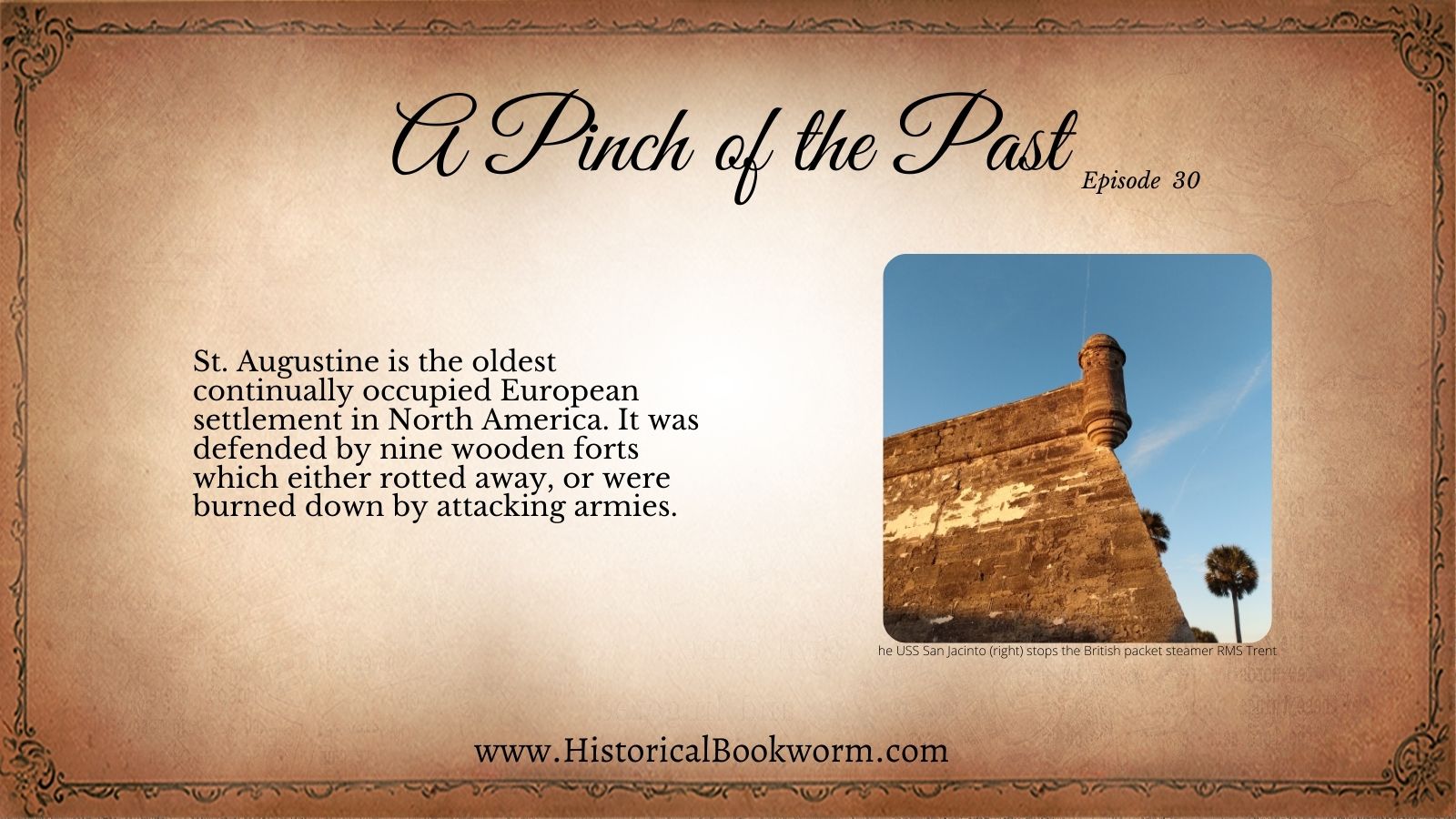As we are recording today, KyLee isn’t feeling well, so I hope you won’t mind joining me as I try not to nerd out too much about one of the coolest places in the United States – the Castillo de San Marcos.
History and Construction

- In 1513, Ponce de Leon claimed the land he named Florida for Spain. It became an important holding to protect the Spanish ships bearing gold and silver from Central and South America back to Spain. As the French started encroaching on Florida, King Phillip II sent Pedro Menéndez in 1565 who founded the town of St. Augustine.
- St. Augustine is the oldest continually occupied European settlement in North America. It was defended by nine wooden forts which either rotted away, or were burned down by attacking armies.

Finally, in 1672 – over 100 years after the founding of St. Augustine – construction began on a stone fort. It was built of locally quarried coquina stone and took 23 years to complete. Coquina is a sedimentary rock made of tiny shells that is actually soft and porous, but hardens when it’s exposed to air. So it’s easy to cut and shape.
Possibly the coolest thing about this stone is it maintains some of its flexibility after it hardens. When the British assaulted the fort with cannon fire, the stone didn’t crack and crumble. The cannonballs simply sank into the stone. During the night, Spanish soldiers would dig out the lodged cannonballs and patch the walls with fresh coquina. Next morning, the fort appeared to have suffered no damage at all.
Never Taken in Siege
- The British besieged the Castillo two separate times in the early 1700’s, but in its entire history, the fort never fell to an enemy attack.
- However, the fort did change hands many times. In 1763, when England defeated Spain in the Seven Years’ War, Florida transferred to British control. Twenty-one years later, Spain regained Florida when the Americans (who were aided by Spain) won the American Revolution.
- Florida officially became U.S. territory with the Transcontinental Treaty of 1821, when Spain renounced its claims on the Northwest and the United States acknowledged Spanish rule in Texas. The Castillo de San Marcos was renamed Fort Marion after Revolutionary War hero Francis Marion.

American Occupation
- Fort Marion became a storehouse for cannons and munitions. In 1861, three days before Florida officially seceded from the Union, the Florida militia marched to seize the fort. The caretaker, Ordnance Sergeant Henry Douglas, was the only man stationed there, so he demanded the Florida militia sign a receipt for possession of the fort and its munitions. Pleased with his courage, the militia took up a collection to pay his passage home. Thus the Confederacy peacefully took control.
- For about a year, St. Augustine was an important hub for blockade runners, but in 1862, the Confederacy decided to cut their losses with Florida. St. Augustine peacefully surrendered, and the Union allowed the city officials to continue with normal life, flying the Stars and Stripes once again. In 1863, with Union control well-established, Fort Marion became a convalescent camp for wounded and weary Union troops.
- Following the wars with the Plains Indians in the late 1800s, when most of them were forced onto reservations, 72 young men from different tribes were transported to Fort Marion and held for months in shackles in the lower rooms, or casemates, of the fort. Conditions drastically changed when Lieutenant Richard Henry Pratt arrived to take command in 1875. He unshackled the men, let them build living quarters on the fort’s gundeck, replaced the American guard with a guard comprised of the Indians themselves, and instituted English classes. He allowed a sun dance in the fort and encouraged the men to learn trades and make souvenirs they could sell to tourists.
- Incarceration of various tribes at the fort, including women and children, ended after 12 years, in 1887. Today, you can still see etchings of the Sun Dance and other carefully preserved Native American drawings carved in the walls of some of the casemates.
- In 1900, the fort was removed from active duty rolls, having served for 205 years under five different flags. In 1924, the fort was designated a historical monument, and in 1933, the National Park Service took over its management from the War Department. It quickly became a popular tourist destination.
- In 1942, during World War II, the fort came out of retirement to serve as a Coast Guard barracks and training base. Its casemates became classrooms, and Coast Guard graduations were held inside the fort walls.
- It was also 1942 when an Act of Congress restored the fort’s original name – the Castillo de San Marcos.
- Today it still presides over the city of St. Augustine, sharing its centuries-long story with hundreds of thousands of visitors every year.
It was also 1942 when an Act of Congress restored the fort’s original name – the Castillo de San Marcos. Today it still presides over the city of St. Augustine, sharing its centuries-long story with hundreds of thousands of visitors every year.


One Reply to “The Story of the Castillo de San Marcos”
Comments are closed.